2016 was a great year for new music and I got to listen to a lot of it. I missed even more, but I enjoyed what I heard. Below is my Top 10. It isn’t in order—that would be too hard to figure out—but it does represent a diverse selection of the music I liked.
For the most part, the music on this list is music I wrote about—or pitched if I didn’t—and kept on listening to even after my assignments were completed or pitches rejected. It is diverse, but I wish it was more diverse. In 2017, in addition to the styles represented here, I hope to get exposed to new musics and genres I didn’t get to explore this year.
I also want to listen to more jazz.
Ty Segall, Emotional Mugger
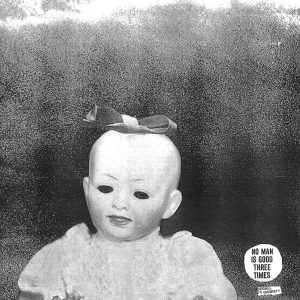 I don’t know if this is the greatest Ty Segall album ever (I thought Manipulator, from two years ago, was better), but you can’t really go wrong with him. He’s consistent and his aesthetic sense is focused and on-message. He’s loud and raunchy when he needs to be, avant-garde when appropriate, and ballsy in a way that isn’t phony. His side projects, like Fuzz and GØGGS, are great, too.
I don’t know if this is the greatest Ty Segall album ever (I thought Manipulator, from two years ago, was better), but you can’t really go wrong with him. He’s consistent and his aesthetic sense is focused and on-message. He’s loud and raunchy when he needs to be, avant-garde when appropriate, and ballsy in a way that isn’t phony. His side projects, like Fuzz and GØGGS, are great, too.
Emotional Mugger is a good introduction to Segall’s weird side. He explores unorthodox sounds—like weird organ tones, whistles, and oddball guitars—plays in odd meters, and sings about candy and ice cream. “W.U.O.T.W.S.,” the second-to-last track on the album, is his “Revolution Number 9” and the bass on “Squealer Two” stands out as particularly righteous. I didn’t understand the album’s marketing—like the gory videos, baby mask, drooling on TV, and incoherent interviews—though I did dig the dude in orange jumpsuit with matching orange Strat. I thought that was a nice touch.
Segall makes interesting music. It is a lot more interesting than most of the stuff I get asked to listen to and Emotional Mugger is an excellent addition to his canon. He already has an album in the pipeline for ’17 and I’m looking forward to hearing it.
Neil Michael Hagerty and the Howling Hex, Denver
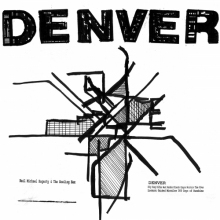 Emotional Mugger was weird for Ty Segall, but Denver, from Neil Michael Hagerty and the Howling Hex, is weird by any standard—and I loved it. It’s an angular mashup of waltzes, polkas, oompah grooves, garage noise, punk, grunge, and ‘90s-era guitar fun. You can’t go wrong.
Emotional Mugger was weird for Ty Segall, but Denver, from Neil Michael Hagerty and the Howling Hex, is weird by any standard—and I loved it. It’s an angular mashup of waltzes, polkas, oompah grooves, garage noise, punk, grunge, and ‘90s-era guitar fun. You can’t go wrong.
For me, I was impressed with how addictive it is. The reason for that, I think, is that in spite of the odd rhythmic feels, mismatched instrumentation, and general strangeness, Hagerty has a keen ear for melody. Denver is singable, which is probably its secret charm. Most people will look at you funny when they catch you listening to it, but listen anyway.
Trust me, you’ll like it.
Fat Knuckle Freddy, Sweet Requiems On A Hot Summer Night
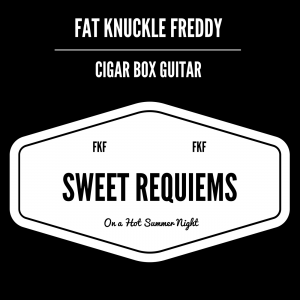 Fat Knuckle Freddy (i.e. Al—or Alfred—Giusto, whose broken left pinkie knuckle healed to the size of a thumb knuckle, hence the name, get it?) is the madman behind Sweet Requiems On A Hot Summer Night, a collection of short compositions for 3 and 4-string cigar box guitar. The album’s instrumentation and overall feel connote a down-home, rural American aesthetic, which is true, provided you combine that with the pointillist stylings of Anton Webern.
Fat Knuckle Freddy (i.e. Al—or Alfred—Giusto, whose broken left pinkie knuckle healed to the size of a thumb knuckle, hence the name, get it?) is the madman behind Sweet Requiems On A Hot Summer Night, a collection of short compositions for 3 and 4-string cigar box guitar. The album’s instrumentation and overall feel connote a down-home, rural American aesthetic, which is true, provided you combine that with the pointillist stylings of Anton Webern.
Giusto plays with a deliberateness, which is refreshing, and it gives the music a composed feel. It also builds a subtle, but intense, tension, which makes for a mature but rewarding and worthwhile listen—especially once those tensions are released.
That restraint is reflected in Giusto’s guitar tone as well. Far from being a joke instrument, his cigar box guitar is warm, full-bodied, and much bigger than you’d expect. He usually fingerpicks the bass parts, which compliment his slide work and rich vibrato.
This isn’t an album for purists—and Giusto isn’t afraid of dissonance either, like on the album’s closer, “Slaying The Waters”—but if you can handle 12 tracks of adventurous solo guitar, brace yourself for a special experience.
Margaret Glaspy, Emotions and Math
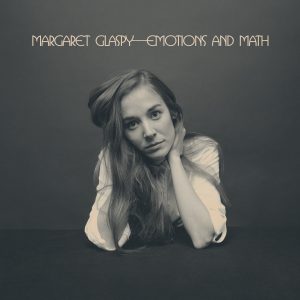 Face it, most singer/songwriters blow. They’re boring, wimpy, predictable, and rely on a generic—i.e. lame—formula. They over-emphasize lyrical content, deemphasize everything else, and take themselves way too seriously (sorry, characters in songs are stupid, unless it’s something like, “Lola”).
Face it, most singer/songwriters blow. They’re boring, wimpy, predictable, and rely on a generic—i.e. lame—formula. They over-emphasize lyrical content, deemphasize everything else, and take themselves way too seriously (sorry, characters in songs are stupid, unless it’s something like, “Lola”).
Which makes Margaret Glaspy a breath of fresh air. Sure, she writes emotional songs with serious lyrics. She often performs solo, too. But the comparisons end there. As I wrote in Premier Guitar, “Emotions and Math is a showcase for Glaspy’s songwriting and Rickie-Lee-Jones-meets-Joni-Mitchell style vocals. But don’t let that distract you. The album’s main attraction is her guitar playing; particularly her intricate finger work, contrapuntal chord motion, edgy tone, and abuse of low-wattage amps. Her music is raw and flirts with the edges of heavy, which is a welcome break from most wimpy singer/songwriters.”
Emotions and Math is a competent and consistent collection of songs, though I most often found myself singing (over and over again) “Somebody To Anybody” and “Anthony.” Glaspy is a talented artist with big ears and diverse tastes, it will be interesting to chart her growth and hear what comes next.
Oozing Wound, Whatever Forever
 Oozing Wound elevate irreverence to a whole new level. Check out their videos: they murder posers, trample lion cubs to death, and pay tribute to things like shotgunning beers and bong hits. Their songs have titles like, “Call Your Guy” and “Everything Sucks, And My Life Is A Lie.” And they marketed Whatever Forever as “Tipper Gore’s worst fears incarnate,” which is about right.
Oozing Wound elevate irreverence to a whole new level. Check out their videos: they murder posers, trample lion cubs to death, and pay tribute to things like shotgunning beers and bong hits. Their songs have titles like, “Call Your Guy” and “Everything Sucks, And My Life Is A Lie.” And they marketed Whatever Forever as “Tipper Gore’s worst fears incarnate,” which is about right.
Whatever Forever is thrash. It’s fast. It’s raw. It’s messy. It’s everything you want in a thrash album, but Oozing Wound have a deeper side, too. They venture far from simple riffs and power chords and often employ more complex voicings—giving their music a darker, more textured and complex sound. They also play in odd meters and rarely stick to traditional verse/chorus song forms.
Of note, is bassist Kevin Cribbin’s innovative approach to the instrument. He has a multi-finger approach to picking—which is nothing new—but he also has a way of using the fingertip of his index finger to execute super-fast lines, something you have to see to believe.
Oozing Wound are serious craftsmen and a great band. Don’t let their sense of humor convince you otherwise.
Savages, Adore Life
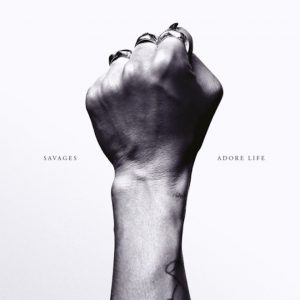 The opening track, “The Answer,” is all you need to hear to know that Adore Life, Savage’s second release, is awesome. That song has a rolling, cyclical groove and heavy-handed riff that pushes it forward and sets the stage for the rest of the album. The other songs on Adore Life are more direct rhythmically, but they are no less intense. Check out “I Need Something New,” the beginning of “Slowing Down the World,” “TIWYG,” or really, all of it, to get a taste for Savages particular brand of bombast.
The opening track, “The Answer,” is all you need to hear to know that Adore Life, Savage’s second release, is awesome. That song has a rolling, cyclical groove and heavy-handed riff that pushes it forward and sets the stage for the rest of the album. The other songs on Adore Life are more direct rhythmically, but they are no less intense. Check out “I Need Something New,” the beginning of “Slowing Down the World,” “TIWYG,” or really, all of it, to get a taste for Savages particular brand of bombast.
For me, guitarist Gemma Thompson is Savages’ secret weapon. Her sonic choices are dark, haunting, sometimes overwhelming, but always musical. Her role, for the most part, is to provide color and contrast. Bassist Ayşe Hassan provides most of the music’s harmonic information, which, in a way, is very similar to U2 and other ‘80s-era post-punk bands.
But don’t let that distract you—and don’t be distracted by comparisons to Siouxsie Sioux either—Savages are very much their own thing and Adore Life is a unique and original statement.
Red Fang, Only Ghosts
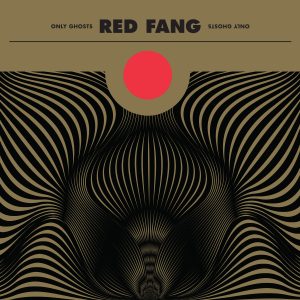 Red Fang are blue collar riff rockers in the tradition of Black Sabbath and even Di’Anno-era Maiden. Their music is straight-forward, tuneful, and Only Ghosts is a great addition to their discography. The album benefits from the bells-and-whistles approach of producer Ross Robinson: layered guitar effects, dramatic crescendos, and interesting noises. Those things sound great on the recordings, though I doubt any of that—even the variant guitar tones—will join them on tour. That’s fine. Live, Red Fang are a what-you-see-is-what-you-get band, but those production enhancements give their recorded sound an added dimension.
Red Fang are blue collar riff rockers in the tradition of Black Sabbath and even Di’Anno-era Maiden. Their music is straight-forward, tuneful, and Only Ghosts is a great addition to their discography. The album benefits from the bells-and-whistles approach of producer Ross Robinson: layered guitar effects, dramatic crescendos, and interesting noises. Those things sound great on the recordings, though I doubt any of that—even the variant guitar tones—will join them on tour. That’s fine. Live, Red Fang are a what-you-see-is-what-you-get band, but those production enhancements give their recorded sound an added dimension.
But that said, Only Ghosts was made to be cranked. The songs aren’t anthemic per se—Red Fang isn’t Twisted Sister—but it is fist pumping music. The choruses are singable and catchy and the breakdowns work best when you’re bumping into other people.
Only Ghosts has depth, too. For example, check out the opening riffs for “Cut It Short” and “Shadows.” They are off-kilter, tricky, and indicative of what’s lurking below the surface. This is not neanderthal rock n roll, it is music with substance. It’s perfect for mosh pits, but offers meat for serious listeners as well.
Bibio, A Mineral Love
 I was expecting to see A Mineral Love everywhere this year. It wasn’t. Other than a few reviews it disappeared after its release. My hunch is that’s because Bibio (Stephen Wilkinson) doesn’t tour, which is a shame because I really enjoyed the album.
I was expecting to see A Mineral Love everywhere this year. It wasn’t. Other than a few reviews it disappeared after its release. My hunch is that’s because Bibio (Stephen Wilkinson) doesn’t tour, which is a shame because I really enjoyed the album.
As I wrote when I reviewed A Mineral Love here, the album’s appeal is its swoony oscillations, trippy textures, and crackling lo-fi noise. “Petals,” the album opener, features a warbled guitar tone and reversed melody line and sets a mellow, yet slightly crooked mood which permeates throughout the album. That mellow vibe deemphasizes some of the album’s extreme rhythmic play as well. For example, “C’est La Vie” sits over a super-exaggerated swung eighth feel and gives the groove a stringy-stretchy bounce. There is also the jerky drum and bass interaction on “Feeling,” which creates a push/pull that makes it difficult to find your footing. It’s subtle, but those surprises make A Mineral Love enjoyable.
I hope Wilkinson decides to hit the road and bring his music to the masses, they will dig it. But I doubt he will, so enjoy A Mineral Love and revel in your insider knowledge.
Black Mountain, IV
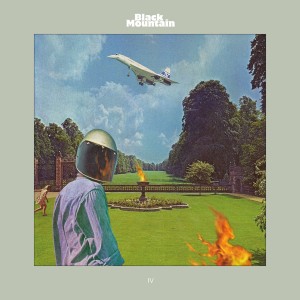 Black Mountain’s fourth album, IV, was an album I was excited about. I wasn’t disappointed. The band harkens back to an era of loose song structures and open-ended jams. They’re heavy, riff-centric, and their recordings are starting points for further exploration.
Black Mountain’s fourth album, IV, was an album I was excited about. I wasn’t disappointed. The band harkens back to an era of loose song structures and open-ended jams. They’re heavy, riff-centric, and their recordings are starting points for further exploration.
The thing I most appreciate about IV, however, is how well-arranged it is. I asked guitarist Stephen McBean about it when I interviewed him for Premier Guitar. “Most of the time there is a rough song,” he said. “It can just be the chords and the lyrics and we’ll just jam on it. There is a certain layering process. Usually we do a lot of the drums, bass, and guitar live, and [keyboardist] Jeremy [Schmidt] usually has a few first parts for each song. As we start overdubbing, we start throwing lots of things on here and there—almost to the point where it’s like, ‘This song sounds gross. There is way too much now.’ We strip it back in mixing through trial and error and people agreeing or arguing.”
IV is an album of 8-minute songs plus shorter pieces that break up the space. The music is a synthesis of diverse influences and the arrangements and orchestration are well thought out. It’s great. It is a great example of a mature band in command of their abilities. It’s also a great album to zone out to on long car rides.
Gemma Ray, The Exodus Suite
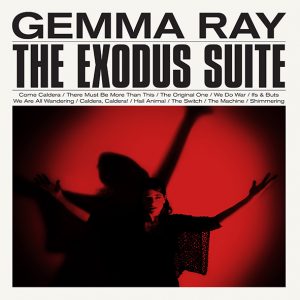 Gemma Ray was a new discovery for me this year and the Exodus Suite was a great introduction to her music. Her style is an organic synthesis of ‘60s-era spaghetti western and film noir. It vibes the energy of bands like Portishead, minus the hiphop feel, and places you in a dark alley, at night, in the rain, and with a cigarette.
Gemma Ray was a new discovery for me this year and the Exodus Suite was a great introduction to her music. Her style is an organic synthesis of ‘60s-era spaghetti western and film noir. It vibes the energy of bands like Portishead, minus the hiphop feel, and places you in a dark alley, at night, in the rain, and with a cigarette.
Songs like “We Do War” and “The Original One” are great examples of what the album offers: heavily tremolo-ed guitar, subtle Bigsby bends, and loosely enunciated vocals. Ray keeps her tonal palette minimal and genre-specific, which far from being a limitation, further enhance the vibe. But the Exodus Suite isn’t a period piece, Ray is a solid songwriter with an ear for seductive melody—just mentioning the song titles is enough for me to get the songs stuck in my head, I am humming “We Do War” right now—and that, combined with smart arrangements and a strong performance make it a compelling listen.
Honorable Mention
The two new releases I listened to the most this year, ironically, weren’t from 2016. The first was Hard Hold from Jaala. It came out in late 2015 and I don’t know how I missed it, my introduction came mid-year. Jaala is the brainchild of Cosima Jaala—she plays guitar and sings—and her music skirts the edges of the avant-garde. It’s an interesting synthesis of weirdness, plus jazz style chord voicings, odd meters, and through-composed pieces. It’s edgy, quirky, interesting, and everything I’m looking for in serious oddball music.
The other is the Svelteness of the Boogietude by Brother JT (John Terlesky). The album was released in 2013, but Terlesky keeps releasing new videos and “Celebrate Your Face” popped into my inbox in April. Brother JT is an artist totally on my wavelength. I love his sound, his songs, his sense of humor, his irreverence, his everything. He can be stupid—who can’t?—but his stupidity only adds to his charm. I don’t know what he does with his time or how he earns a living, but I want more Brother JT. Give it to me.